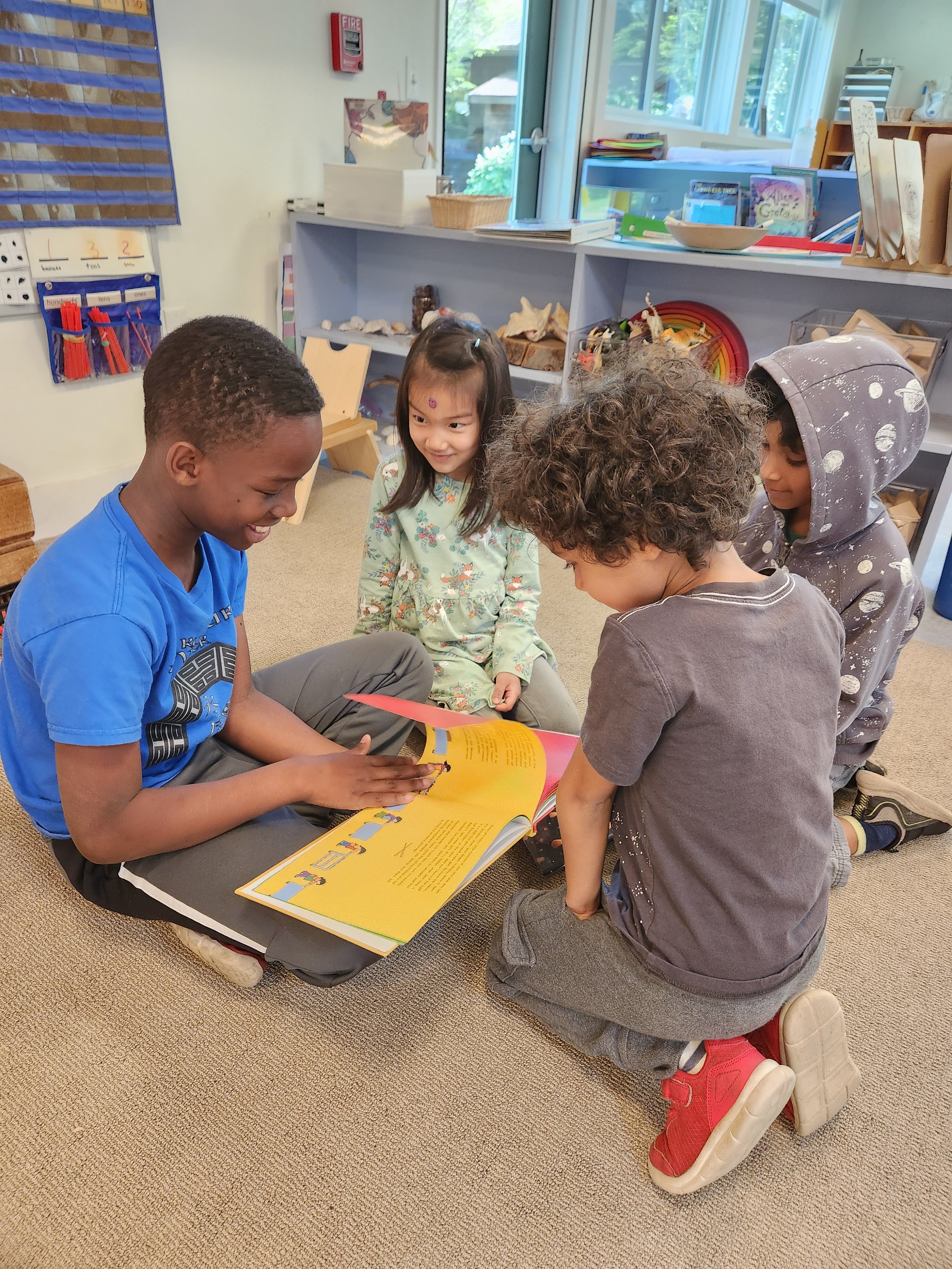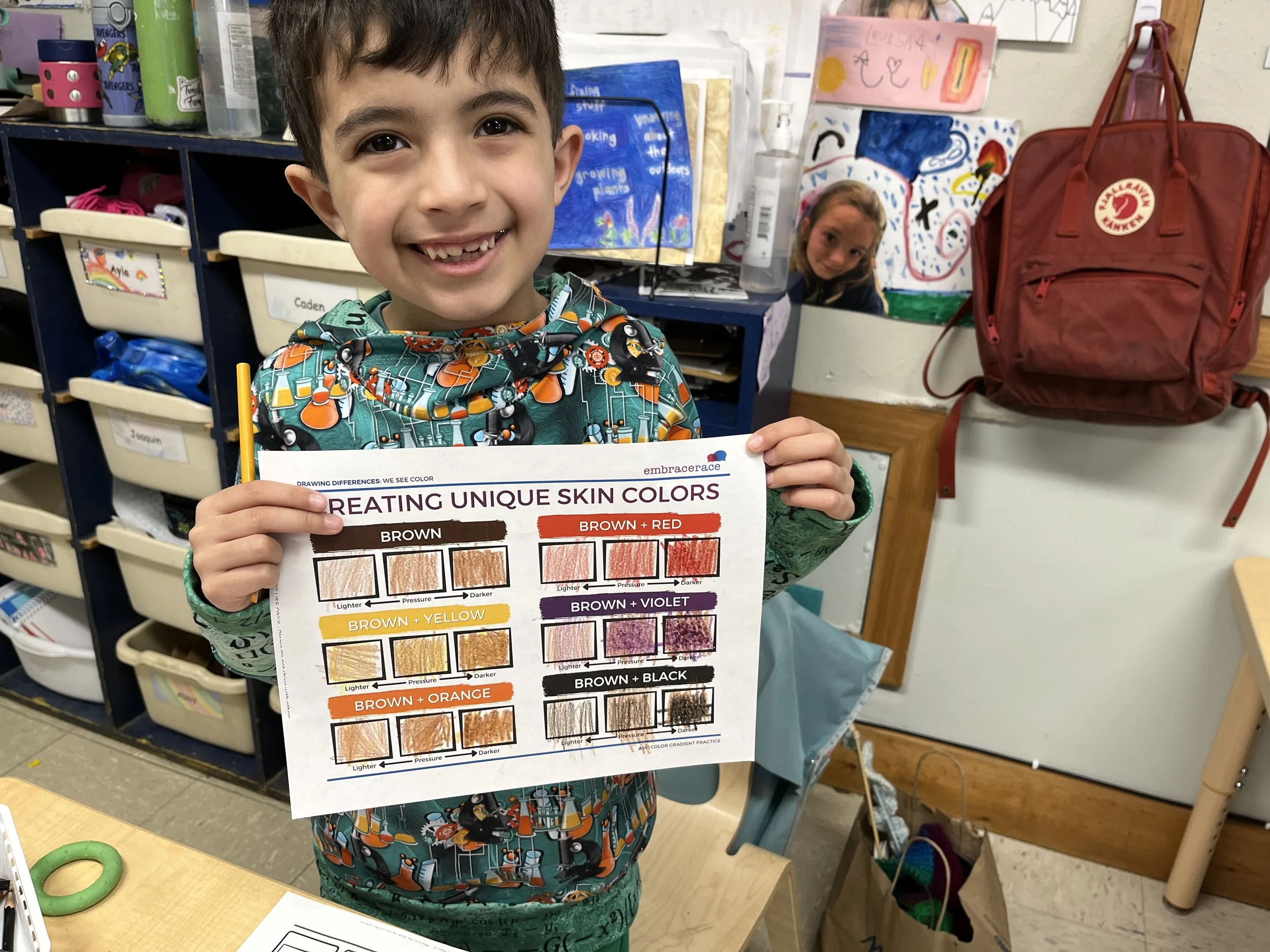Primary
Primary school students are learning to read and write in small, differentiated groups and developing social and emotional skills.
To support their trajectory, our In-Depth Studies curriculum engages students in collaborative, hands-on projects based on their interests. Students also work with specialist teachers in music, physical education, and library, and there is plenty of time for play and time outdoors, too.
A Primary 1 classroom recently chose to study snakes when a small hibernaculum was discovered right outside their door. Students asked questions, made hypotheses, observed, researched, and handled the snakes. They created a book about what they learned and shared it with their families.
A Primary 2 classroom was inspired by two Wampanoag potters from Aquinnah to create their own coil-built clay pots. In the process, students discovered how many words we use today are from Indigenous languages, including skunk, hickory, toboggan, Massachusetts, and pumpkin. They also learned how Wampanoag Nation members are trying to reclaim and teach their native language.
Peek into a Primary classroom on any given day and you’ll find:
A classroom environment that supports developing social skills and where sharing, negotiating, taking turns, and solving problems together are all part of the process.
Students embracing independent learning through skill-building activities, portfolio reflection, and by managing their own project choices and materials.
Interdisciplinary lessons that incorporate movement, dance, drama, and art making.
Primary Curriculum Highlights



